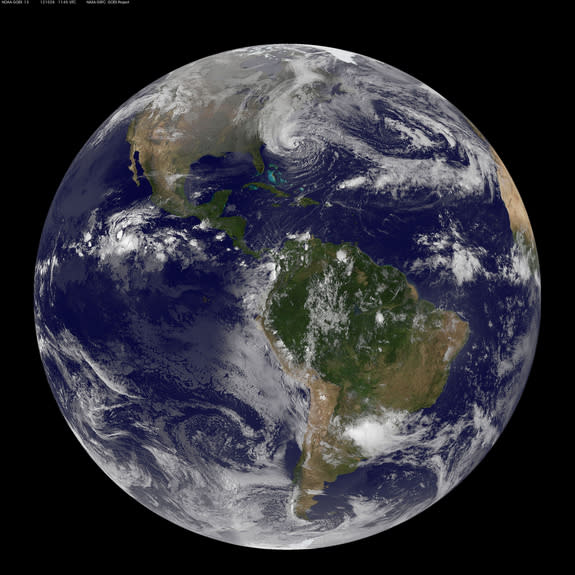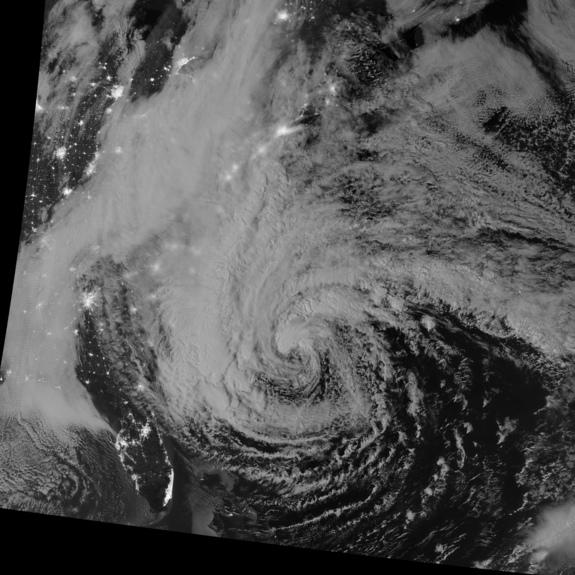Hurricane Sandy's Menacing Size on Earth Revealed in Satellite Photos
A series of satellite photos of Hurricane Sandy have captured eye-popping views of the frightening storm from space, showing the tempest in relation to the entire planet Earth, as well as its appearance at night.
The new satellite views of Hurricane Sandy were snapped Sunday (Oct. 28) by the GOES-13 weather satellite and the powerful Suomi NPP Earth-watching satellite. Both satellites are used by NASA and the National Oceanic and Atmospheric Administration to monitor Earth's weather.
It was NOAA's GOES-13 satellite that captured the stunning view of Hurricane Sandy as it appeared on the entire disk of Earth.
The image shows a complete view of North America, Central America and South America, with Sandy appearing as an unmistakable spiral of clouds battering the U.S. East Coast. Bands of clouds stretch from just north of Florida all the up toward Maine, with a wispy tendril of clouds also reaching eastward across the Atlantic Ocean. [Photos: 'Frankenstorm' Hurricane Sandy from Space]
The nighttime view of Hurricane Sandy by Suomi NPP offers a more intimate view of the Category 1 hurricane.
The image was taken at 2:42 a.m. EDT (0642 GMT) by a special "day-night band" instrument on Suomi NPP that can detect a wide range of light wavelengths, which allows the satellite to observe dim targets like auroras, city lights and reflected moonlight, explained Michael Carlowicz of NASA's Goddard Space Flight Center in Greenbelt, Md., in an image description.
The night view of Hurricane Sandy shows the storm just east of Florida and Georgia, and bright city lights in both states can be seen in the image. The hurricane, itself, is revealed by moonlight reflecting off its cloud tops. The view was created by Jesse Allen and Robert Simmon at the NASA Earth Observatory, which regularly releases amazing views of Earth from satellites in orbit.
The Suomi NPP (the name is short for Suomi National Polar-orbiting Partnership) is a joint project by NASA, NOAA and the U.S. Department of Defense.
GOES-13 and Suomi NPP are just two of the many weather satellites currently tracking Hurricane Sandy. NOAA has also been using GOES-15, while NASA's Terra satellite and Tropical Rainfall Measuring Mission satellite have also been following the storm.
As of early Monday (Oct. 29) Hurricane Sandy was a Category 1 storm with wind speeds of up to 75 mph (150 kph) as it approached the U.S. East Coast. The storm was expected to make landfall in Delaware and New Jersey on Monday night and cause substantial flooding and power outages, according to the National Hurricane Center.
You can follow SPACE.com Managing Editor Tariq Malik on Twitter @tariqjmalik and SPACE.com on Twitter @Spacedotcom. We're also on Facebook & Google+.
Copyright 2012 SPACE.com, a TechMediaNetwork company. All rights reserved. This material may not be published, broadcast, rewritten or redistributed.


